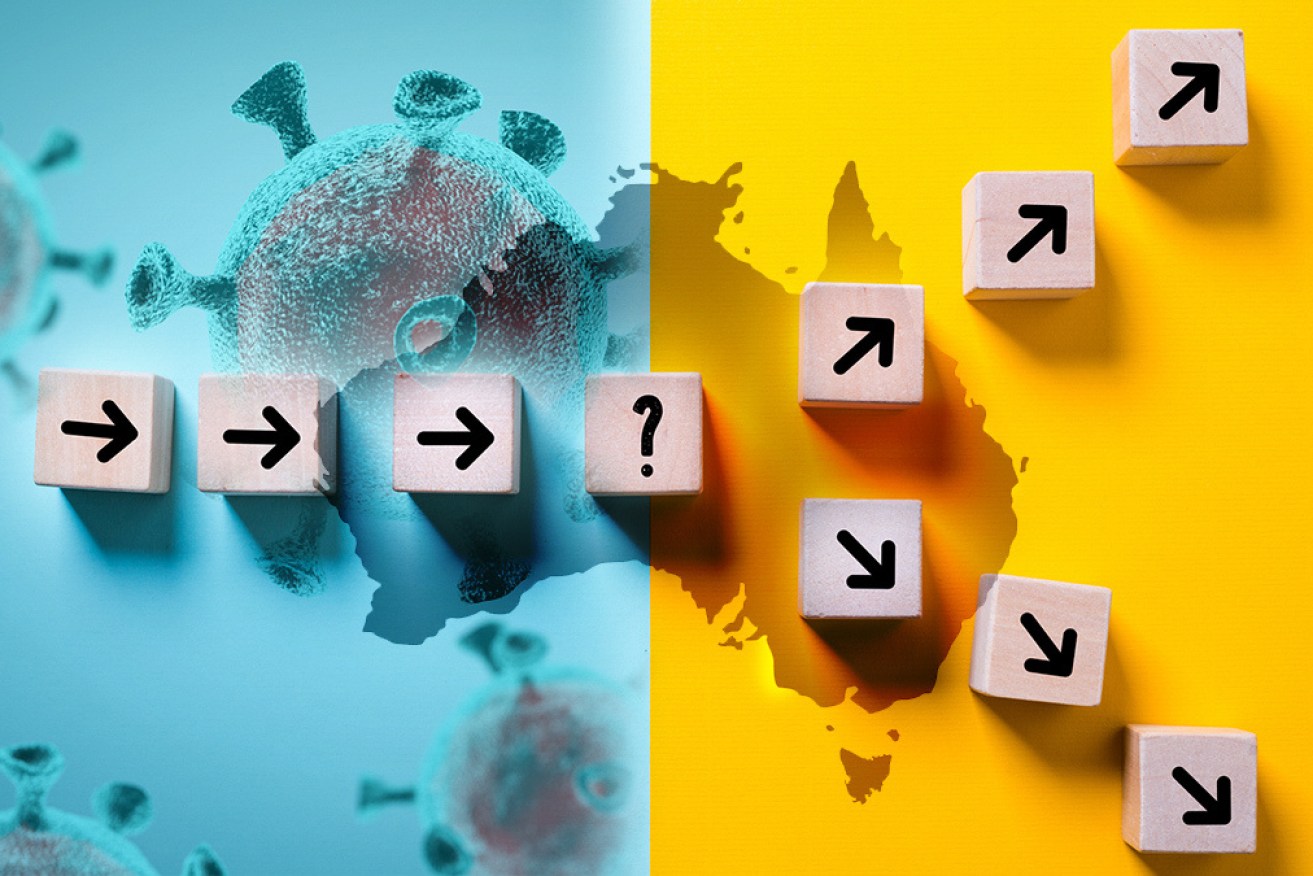Australia has two paths out of the coronavirus pandemic, say top researchers


Each state and territory is taking a different approach to easing coronavirus restrictions. Photo: Getty/TND
Leading scientists and academics have revealed two ways Australia can recover from the COVID-19 pandemic in a new report to the federal government.
The independent report, written by the Group of Eight (Go8), a task force of top researchers from eight Australian universities, outlines a ‘roadmap to recovery’ out of the national crisis.
The good news: We’re in a much stronger position than most Western countries battling the disease.
The bad news: Overseas holidays will be off the table for the foreseeable future.
For at least the next six months, Australians must be banned from all international travel, the report states.
Any returned travellers must undergo two weeks of forced quarantine, regardless of origin or citizenship.
Option 1: Eliminate the coronavirus and seal our borders
“The elimination strategy should lead to fewer total infections, hospitalisations and deaths, and better protection of vulnerable populations than any of the alternatives,” the report states.
“Once achieved, elimination would allow for a faster relaxation in social distancing and other restrictions.”
But this pathway comes at a cost – it means some states would likely have to remain in lockdown beyond mid-May, possibly for another 30 days.
It would also require widespread testing and contact tracing, as well as extremely strict international border control measures.
“Australia’s unique geography, strong border control and quarantine procedures would enable this,” the report states.
If the virus is successfully eliminated, it’s likely more people would feel confident about getting back to work, allowing for a “fuller and more vigorous recovery of the economy”.
Option 2: Accept and manage low level of COVID-19 cases
Rather than getting rid of the virus completely, an alternative strategy is to try to control the outbreak as much as possible while accepting that ongoing infections are still going to occur.
Part of this would mean helping Australians get used to their new life post-pandemic when the threat of the virus is still present.
This may include a pattern of the government loosening and tightening social distancing restrictions, depending on the rise and fall of case numbers.
One immediate benefit of this option, however, is that phased lifting of restrictions could begin as early as mid-May.
Life won’t return back to normal, but it will give us more freedom to spend time with family and friends.
A major long-term advantage of this approach is “it acknowledges the high likelihood of prolonged global circulation of this infection”.
We can’t close our borders forever, and we need to get used to living with the continual risk of infections.
Like the first option, this strategy will require extensive testing and contact tracing.
But there is a danger: A second spike of infections could occur like it did in Singapore if we are not careful.
This might result in the reintroduction of tough lockdown rules.
Getting the economy on track may be slower too, as “it is hard to predict” the public’s confidence about working when restrictions are lifted with new cases ongoing.








